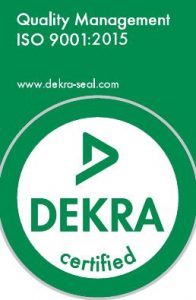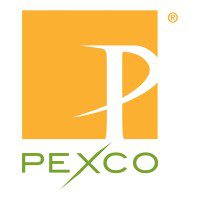Proprietary Tool Design Software Contributes To Precise Sealing Surface
- Market: Oil & Gas
- Project Requirement: Produce an “out-of-mold” net shape fiber reinforced PEEK seal holding dimensional tolerances of .0003 inches.
Overview
Mating parts providing a fluid or gas seal are critical components in most mechanical systems. We commonly think of them in valves and connector assemblies, but they are also found in pressure vessels, compressors, pumps, motors, engines, transmissions, and almost all mechanical power trains. Seals, especially those that mate to moving parts, have a demanding set of quality requirements. Each application has its own specific needs, but all seals are characterized by tight dimensional tolerances and excellent surface finish.

Dresser-Rand is among the largest global suppliers of custom-engineered rotating equipment solutions for long-life, critical applications in the oil, gas, chemical, petrochemical, process, power, military, and other industries worldwide. Their industry leading Magnum™ valves are used in all brands of reciprocating compressors, where they are known for operating at high compressor speeds and pressure differentials. The product contains 30 to 100 valve elements manufactured from a fiber reinforced PEEK thermoplastic, providing the high strength and low inertia necessary for reliability at high operating speeds.
Challenge
Dresser-Rand engineers wanted to improve the usable life and leakage profile of their Magnum valve without absorbing any increase in component cost. The sealing surface specifications were tightened to 0.0005 inches (12.7 µ) which was key to accomplishing the performance improvements.

Dresser-Rand’s then current supplier of this component was unable to meet the more stringent sealing surface dimensional tolerances “out of the mold” necessitating a finish machining operation to bring the part into tolerance. However, machining the sealing surface removed the resin-rich surface of the part creating micro-cracks in the surface and exposing reinforcing fibers. Both of these unavoidable consequences of machining negatively impacted component performance, useful life and cost. While it’s never easy to get “something for nothing”, Dresser-Rand knew the right people to talk to, the injection molding thermoplastic experts at Performance Plastics, LLC (PPL).
Solution
Performance Plastics knew eliminating the machining operation would improve strength, reduce trapped impurities, and lower manufacturing cost. Thus, PPL’s engineering team focused on producing a “true net shape” part directly out of the mold. Key to accomplishing the customers goals involved leveraging the Company’s proprietary, iterative tool design process. It required making a 3D CT scan of preliminary molded parts measuring, in this case, approximately 1 million critical part dimensions. This analysis identified minute distortions. Utilizing internally developed proprietary software, PPL integrated the CT scan data with CAD/CAM software to make exacting mold modifications eliminating the out of tolerance conditions. This process contributed to producing a best in class “out-of-mold” conforming part.
The manufacturing process also had to be optimized to produce the desired performance results. Although the material posed molding challenges, PPL decided to direct gate the part at the top to ensure symmetry of material flow throughout the cavity, critical in achieving roundness to the sealing surface.
Results
The results of development program surprised everyone. PPL achieved “out of mold” net shape parts with a seal surface capable of meeting sealing ranges of 100 psi to 3,000 psi, with no porosity and consistently meeting dimensional tolerances of 0.0003 inches, or 7.62 µ. Eliminating the need for subsequent finish machining dropped the leakage rate for the valve by 50%, from 1.0 scfm to 0.5 scfm. At the same time, Dresser-Rand reported a doubling of estimated lifetime from 10M to 20M cycles between valve element replacement. Lastly, PPL’s direct gating approach improved material efficiency, by eliminating the sprue and runner system, resulting in a lower price per part. Dresser-Rand’s customers benefitted from improved performance, increased service life and lower maintenance costs.
For more information about our net shape molding process please contact us.








